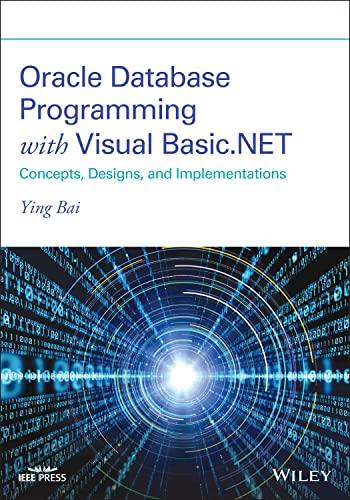Question
Do the following coding exercises and submit your source code along with a copy of your output screens in the Word document. C5.1. (Chapter 9)
Do the following coding exercises and submit your source code along with a copy of your output screens in the Word document. C5.1. (Chapter 9) Design a public class named Car to represent a car. The class contains:
a. Five public integer constants named SUV, TRUCK, SEDAN, MINIVAN, SPORTS_CAR
b. A private int data field named type that specifies the type of car (default value is MINIVAN)
c. Eight public integer constants named GAS, DIESEL, ELECTRICITY, HYDROGEN, NATURAL_GAS, WIND, SOLAR, WATER
d. A private int data field named fuel that specifies the type of fuel for the car (default value is GAS)
e. A private int data field named year that specifies the year of car (default value is 1980)
f. A private String data field named brand that specifies the brand of car (default value is Ford)
g. A private String data field named colour that specifies the colour of car (default value is Red)
h. The accessor and mutator methods for all five private data fields (type, fuel, year, brand, colour).
i. A no-arg constructor that creates a default car
j. A constructor that creates a car with the specified type, fuel, year, brand, and colour. Ensure that the parameter names of the constructor are the same name as the corresponding data fields. Utilize the this keyword to ensure the data fields are not hidden.
k. A method toString() that returns a string description for the car. For example, the default car must return the following string (year + colour + brand + fuel + type): i. 1980 Red Ford Gas-powered Minivan
Draw the UML diagram for the class Car and then implement the class. The Car class must be part of the ca.car.mypackage package (you need to figure out how to do this in Java).
Write a test program (TestCar) that must also be part of the ca.car.mypackage package.
In the test program, create five Car objects using an array of Car objects:
One of them must be the default car (to test the default constructor)
Each five cars must be unique, with a different year, colour, brand, fuel and type
For each car, print out the description using the toString() method and encapsulate in a method that is called by the main method:
o static void printCars (Car [] c)
Next, test the mutator methods:
Ensure all of the cars are the same colour Black
Randomly select two cars and set their fuel to GAS powered (use the Math.Random()) function to select the two, be careful to generate two different cars to modify)
Randomly select two cars and set their brand to Tesla (use the Math.Random()) function to select the two, be careful to generate two different cars to modify)
Randomly select three cars and set their type to SEDAN (use the Math.Random()) function to select the three, be careful to generate three different cars to modify)
Encapsulate this code in its own method and call from the main method:
o static void testMutatorMethods (Car [] car)
Print out all the mutated cars from the main method after returning from the testMutatorMethods method, using printCars
Test the accessor methods and print out (using the Car class toString() method):
Only the Black GAS-powered cars
Only the cars with the brand Tesla and type of SEDAN
Only the alternate fuel cars (fuel is not equal to GAS and not equal to DEISEL) Encapsulate this code in its own method and call from the main method:
o testAccessorMethods (Car [] car)
o Inside this method, print out the cars that match the three selections mentioned above
NOTE: Please define the public Car class in its own Java file separate from the test program as shown in Lesson #8.
Here is a sample output of the program:

Step by Step Solution
There are 3 Steps involved in it
Step: 1

Get Instant Access to Expert-Tailored Solutions
See step-by-step solutions with expert insights and AI powered tools for academic success
Step: 2

Step: 3

Ace Your Homework with AI
Get the answers you need in no time with our AI-driven, step-by-step assistance
Get Started


